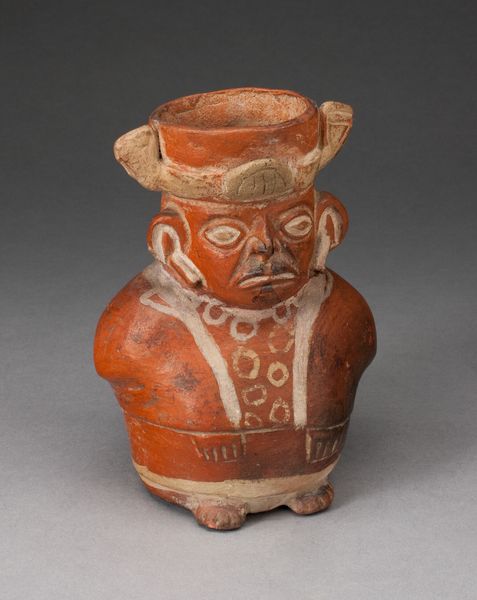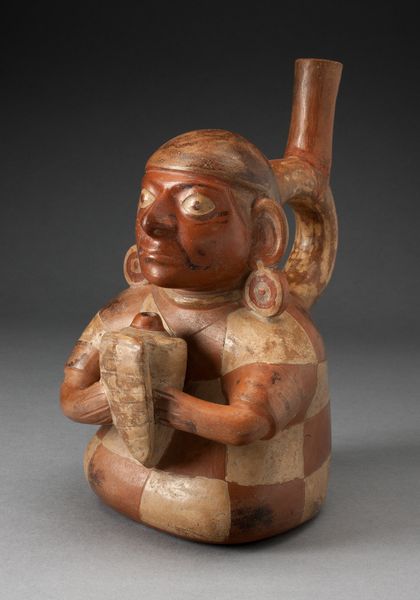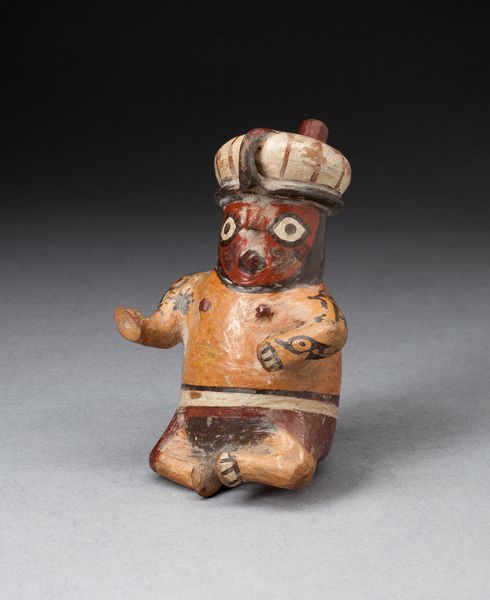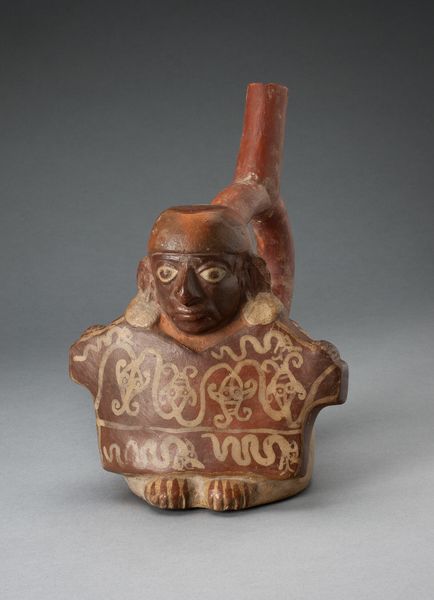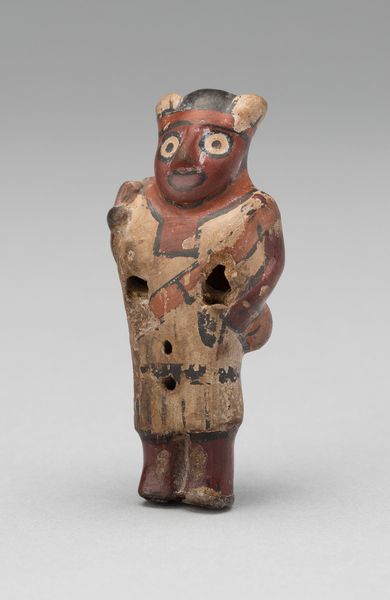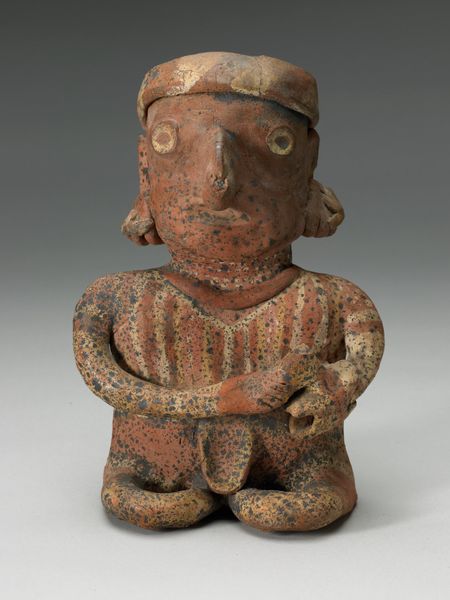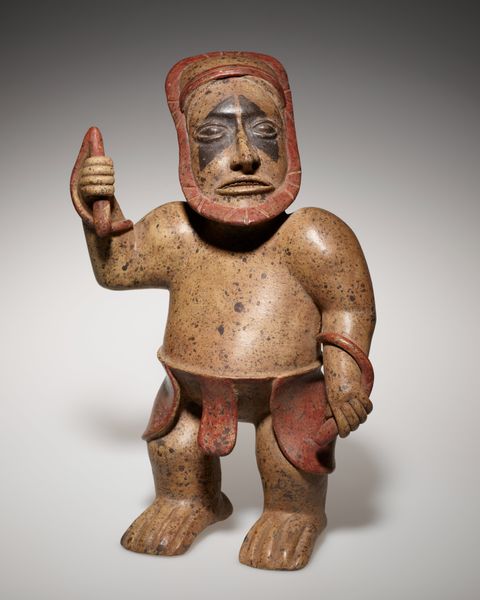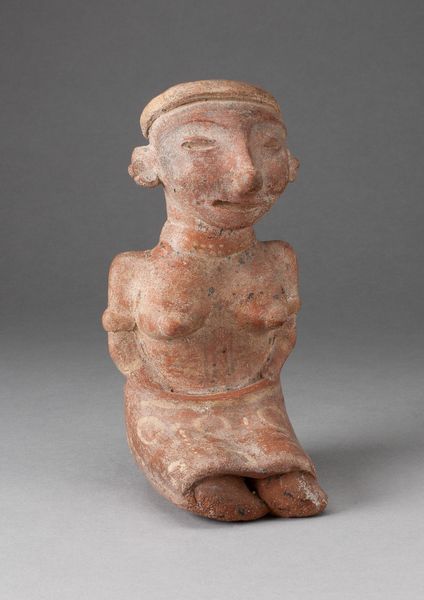
Jar in the Form of a Figure with Painted Head, Large Earflares, and Feline Headdress c. 100 - 500
0:00
0:00
ceramic, sculpture, terracotta
#
portrait
#
ceramic
#
figuration
#
sculpture
#
terracotta
#
indigenous-americas
Dimensions: H. 40.6 cm (16 in.)
Copyright: Public Domain
Editor: Right in front of us we have a Moche ceramic piece, dating from around 100 to 500, entitled "Jar in the Form of a Figure with Painted Head, Large Earflares, and Feline Headdress." It feels incredibly regal. How do you read this sculpture? Curator: Well, let’s consider the function of such a vessel. Moche ceramics weren’t mere decoration; they served vital roles in ritual and elite society. This particular jar, given its depiction of a figure adorned with elaborate earflares and a feline headdress, likely represents a high-status individual or a figure of authority, maybe a ruler or a priest. What does the feline headdress evoke for you? Editor: Power, definitely, maybe a connection to the spiritual world? I guess I just think of powerful rulers and their connection with animals... Curator: Exactly. The feline was a powerful symbol in Moche cosmology, associated with strength and supernatural abilities. Representing an individual with such regalia speaks volumes about the power dynamics and social stratification of Moche society. Moreover, these vessels were often found in burial contexts, implying their significance in the afterlife. It forces us to ask questions: who had access to these objects, what rituals did they participate in, and what narratives were these objects trying to communicate? Editor: That’s fascinating. So it’s less about pure aesthetics and more about understanding its role within a specific historical context? I'm trying to relate this to other forms of portraiture across different cultures, too... Curator: Precisely! By understanding its societal function, we can avoid imposing modern notions of art onto a culture with vastly different values. Do you think understanding the historical context affects your appreciation of the art? Editor: Definitely. I feel like I’m seeing the figure for who it really is—a symbol of Moche power—rather than just as an ancient sculpture. Curator: I find that a more thoughtful way of considering historical imagery can shift perceptions, broadening what art can be and what purposes it can have, don't you think? Editor: I think I have a greater appreciation of how interwoven politics, status, and artistic representation are after considering this piece.
Comments
No comments
Be the first to comment and join the conversation on the ultimate creative platform.

